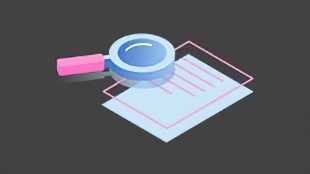您需要 登录 才可以下载或查看,没有账号?注册

x
本帖最后由 秋令6689 于 2022-5-9 15:47 编辑
Runes Camp – Environment Breakdown – Jens Peppler 符文营 – 环境分解 – Jens Peppler
Introduction Hello, my name is Jens Peppler and I am a 3D Environment Artist from Germany. Currently, I work for Wayward Studios, an Indie Studio that my friends and I founded, and, at the same time, as a 3D Art Lecturer. My newest project “Rune’s Camp” is my first exterior environment. As with every new portfolio piece, my goal was to improve my own skill to create a finished environment scene. Specifically for this project, my goal was to enhance my abilities in composition and lighting, as well as to recreate a concept made by another person. But first and foremost I had to think about what scene I want to create. I turned to my Artstation Environment Collection and Simon Fuchs who gave me feedback for my past projects as well to elaborate, what would be a good new project to improve myself. After a little back and forth I made the decision that I wanted to recreate this awesome concept called ““ by Zimmy. 介绍 你好,我的名字是Jens Peppler,我是来自德国的3D环境艺术家。目前,我在Wayward Studios工作,这是我和我的朋友创立的独立工作室,同时担任3D艺术讲师。 我的最新项目“Rune's Camp”是我的第一个外部环境。与每个新的投资组合一样,我的目标是提高自己的技能,以创建一个完成的环境场景。 特别是对于这个项目,我的目标是提高我在构图和照明方面的能力,以及重新创造另一个人制作的概念。 但首先,我必须考虑我想创造什么场景。我求助于我的Artstation Environment Collection和Simon Fuchs,他们也为我过去的项目提供了反馈,以详细说明什么是一个好的新项目来改善自己。经过一番反复,我决定要重新创造Zimmy的“符文营”这个令人敬畏的概念。

Planning To start the project I took the concept and circled individual assets. This method makes it very easy to separate assets from the environment. The focus is on separated sections and not on the whole scene anymore. That makes dissecting assets and planning modules pretty comfortable. In addition to that, I set up a Trello Board to organize everything. As a little side note, I even listed notes for creating a to-do list or to break down the assets, in order to immediately have something checked as done, as a small motivation. What helped me as well was that I sat down with Dennis Levi at regular intervals, so that everyone can work on their project. This created a work environment, motivated us, and gave us the possibility to get feedback immediately. 规划 为了开始这个项目,我采用了这个概念,并圈出了各个资产。使用此方法,可以非常轻松地将资产与环境分离。重点是分离的部分,而不是整个场景。这使得剖析资产和规划模块非常舒适。 除此之外,我还建立了一个Trello板来组织一切。作为一个小小的旁注,我甚至列出了创建待办事项列表或分解资产的注意事项,以便立即检查完成某些内容,作为一个小动机。 对我有帮助的是,我定期与Dennis Levi坐下来,这样每个人都可以从事他们的项目。这创造了一个工作环境,激励了我们,并给了我们立即获得反馈的可能性。 Blockout To create my Blockout I used Maya. With the help of Image Planes to get my reference into the scene, I blocked out the main shapes. For size regulation, I placed characters around my blockout on important points. This helps me, not just to work with measures, but also to get the size in a visual relation. Once I had something that looked appealing I imported the blockout into Unreal. I built the first lighting setup and created a fixed camera for my main shot. That way I know how the most important screenshot will look like, which will represent my project. And besides that, I am able to document my progress, which is always a huge motivation during a project. 封锁 为了创建我的Blockout,我使用了Maya。在图像平面的帮助下,我将参考引入场景,我屏蔽了主要形状。为了调整尺寸,我在重要点上将字符放在我的遮挡周围。这有助于我,不仅可以使用度量值,还可以在视觉关系中获得大小。 一旦我有了一些看起来很吸引人的东西,我就把格挡导入虚幻引擎。我构建了第一个照明设置,并为我的主要镜头创建了一个固定摄像机。这样我就知道最重要的屏幕截图会是什么样子,这将代表我的项目。除此之外,我能够记录我的进步,这在项目期间总是一个巨大的动力。 Software I used Maya for modeling to create UVs. ZBrush to sculpt organic assets or to generate Highpolys with Polygroups and Deformation Modifiers. Marmoset Toolbag to bake the assets. Substance Designer and Painter to create Materials, Smart Materials, and texturing assets. And finally, Unreal Engine 4 to present my scene. 软件 我使用 Maya 进行建模来创建 UV。ZBrush 用于雕刻有机资产或使用多元组和变形修饰符生成高聚物。狨猴工具袋烘烤资产。物质设计师和画家,用于创建材质、智能材质和纹理资源。最后,虚幻引擎4将呈现我的场景。 Main Assets I started with the parts, which shape the silhouette of the house. The largest part was the house facade for the first floor. The geometry is quite simple, but the texture is interesting. It is a huge surface, which Tileables are perfect for, but in the concept, the surface consists out of two materials that merge into another. This is something I have never done before, which was also a reason why I wanted to recreate this scene in particular. I remembered the Quixel Scene “Goddess Temple” by Jakob Keudel. He used an ID Map with a specially designed Master Material to blend Materials in Unreal similar to Substance. This workflow gave him a non-destructive workflow with a lot of control within the engine without any loss of the texel density. 主要资产 我从零件开始,这些零件塑造了房子的轮廓。最大的部分是一楼的房子外墙。几何形状非常简单,但纹理很有趣。这是一个巨大的表面,Tileables非常适合,但在概念中,表面由两种材料组成,这些材料融合成另一种材料。这是我以前从未做过的事情,这也是我特别想重现这个场景的原因。 我想起了雅各布·库德尔(Jakob Keudel)的Quixel场景“女神庙”。他使用ID贴图和专门设计的母版材质来混合虚幻引擎中的材质,类似于Substance。 这个工作流程为他提供了一个非破坏性的工作流程,在引擎内有很多控制,而不会损失纹素密度。 That inspired me to try something like this as well. I imported the geometry into ZBrush and sculpted the transition of the materials. After that, I marked each of the two materials and the transition with Polygroups and Polypain. Then I baked my Highpoly onto my Lowpoly to get an Ambient Occlusion Map, a Normal Map, and an ID Map. In Unreal I created my Master Material to do the blending. The baked Ambient Occlusion Map and Normal Map were the foundation and on top of that, I blended Tileable Materials based on the ID Map. 这也激励我尝试这样的事情。我将几何图形导入 ZBrush 并雕刻了材质的过渡。之后,我用Polygroups和Polypain标记了两种材料中的每一种以及过渡。然后,我将高聚物烘焙到低聚体上,以获得环境光遮蔽贴图、法线贴图和 ID 贴图。在虚幻引擎中,我创建了母版材质来进行混合。烘焙的环境光遮蔽贴图和法线贴图是基础,在此基础上,我根据ID贴图混合了可平铺材质。 To create the second floor I sculpted five wooden planks. That gave me enough variety to not directly notice a repeating pattern, especially if you consider that they will be used on other occasions as well. I arranged them around the house to build the second floor. To get the wooden planks a bit mossy, I created a Master Material to blend two materials per World Space. This workflow gave me a lot of control to arrange every single wooden plank because the mossy part was always at the bottom, no matter how the asset is turned around. 为了创造二楼,我雕刻了五块木板。这给了我足够的多样性,不会直接注意到重复的模式,特别是如果你考虑到它们也会在其他场合使用。我把它们安排在房子周围,以建造二楼。为了让木板有点苔藓,我创建了一个主材质,为每个世界空间混合两种材质。这个工作流程给了我很多控制来安排每一块木板,因为无论资产如何翻转,苔藓部分总是在底部。 Afterward, I created a trim sheet out of the wooden planks to texture some larger parts as well like the frame of the roof or the window wall for the second floor. The Highpolys were also reused a lot. If an asset was made of wood, I used the Highpolys of the wooden planks as a base to save me a work step. For example, you can recognize the same wooden planks within the doors. 之后,我用木板制作了一张装饰板,以纹理化一些较大的部分,以及屋顶的框架或二楼的窗墙。 高聚物也被大量重复使用。如果一个资产是用木头做的,我就用木板的Highpolys作为基础,为我节省了一个工作步骤。例如,您可以识别门内的相同木板。 To create the roofs I focused primarily on materials. I used one-sided geometry and a Displacement/Tesselation Master Material to get the tile-like shape. With one material I create a base but the concept shows mossy parts as well. To get these implemented in my Master Material I used a blend, based on Height Map Information and a Grunge Map. Similar to my Master Material specifically for the first floor, I get a non-destructive Workflow and a lot of control. 为了创建屋顶,我主要关注材料。我使用单侧几何体和位移/镶嵌主材质来获得类似瓷砖的形状。我用一种材料创造了一个底座,但概念也显示了苔藓部分。为了在我的主材质中实现这些,我使用了基于高度贴图信息和垃圾乐贴图的混合。与专门用于一楼的主材质类似,我获得了无损的工作流程和大量的控制。 Modeling Workflow Most of the assets were created in the Lowpoly Highpoly workflow. Nothing special, except that every Highpoly went through ZBrush. Instead of Support Edges which have to be set up everywhere, I used the Polygrup and Deformation by Zbrush. With “Group By Normals” I divide the asset into areas where I wanted “Soft Edges” and “Hard Edges”. Sometimes I had to regroup some parts because the Polygroups were not exactly generated where I wanted them, but that only took a short time to tweak. 建模工作流程 大多数资产都是在低聚高聚工作流中创建的。没什么特别的,除了每个高聚会都经历过ZBrush。我没有使用必须在任何地方设置的支持边缘,而是使用了Zbrush的Polygrup和变形。使用“按法线分组”,我将资源划分为我想要的“软边缘”和“硬边”的区域。有时我不得不重新组合一些部分,因为 Polygroups 并没有完全在我想要的地方生成,但这只需要很短的时间来调整。 After that, I used ”DynaMesh” to get a higher Polycount, and then I used “Polish By Features”. This workflow gives me a Highpoly with a smooth surface and hard edges which are positioned exactly where different Polygroups meet in a short amount of time. To get the edges a bit rounder I masked the different edges with the help of “Mask By Features” and then I used “Polish” so that I can make the edges softer using a parameter. I see the effects straight away and have more control over them than with a workflow that relies on support edges. 之后,我使用“DynaMesh”来获得更高的Polycount,然后我使用“按功能抛光”。这个工作流程给了我一个具有光滑表面和坚硬边缘的Highpoly,这些边缘可以在短时间内精确定位在不同多边形组相遇的地方。为了使边缘更圆润,我在“按特征蒙版”的帮助下遮罩了不同的边缘,然后使用了“抛光”,以便可以使用参数使边缘更柔和。我立即看到效果,并且比依赖于支持边缘的工作流程更能控制它们。 Foliage For foliage, I primarily used Quixel Megascans. Ivy is the only exception. By chance, I came across a program “An ” by Thomas Luft. An incredible tool and really simple to use. You import an asset in this software, create a point with one mouse click to be the root of the ivy, adjust some growing parameters, and done. It was a real pleasure to work with this tool. 树叶 对于树叶,我主要使用Quixel Megascans。常春藤是唯一的例外。一次偶然的机会,我偶然发现了托马斯·卢夫特(Thomas Luft)的常春藤发电机。一个令人难以置信的工具,使用起来非常简单。您在此软件中导入资源,只需单击鼠标一下即可创建一个点作为常春藤的根,调整一些不断增长的参数,然后完成。使用这个工具真的很愉快。 Background Originally the scene was planned as a diorama, but to watch Dennis Levi build his background inspired me to do a full background as well. With the positioning of the mountains and the treetops, I tried to draw composition lines that point to the house. On the left side, you can see that it worked very well but not so much in the background. This is definitely something where I want to improve my skills. 背景 最初,这个场景被计划为一个立体模型,但观看丹尼斯·列维(Dennis Levi)构建他的背景也激发了我做一个完整的背景。随着山脉和树梢的位置,我试图画出指向房子的构图线。在左侧,您可以看到它工作得很好,但在后台效果不佳。这绝对是我想提高技能的地方。 To create the ground I searched for software that gets me a Height Map based on real-world maps and found “TerRain2STL” ”. 为了创建地面,我搜索了一些软件,该软件可以让我根据真实世界的地图获得高度图,并找到了“"Terrain2STL"。 。 I selected a piece of the map and generated the ground and the mountains for my scene. In addition to that, I created a Master Material with Vertex Painting to texture the ground. For the materials and rocks, I used Quixel Megascans. 我选择了地图的一部分,并为我的场景生成了地面和山脉。除此之外,我还创建了一个具有顶点绘画的主材质来纹理地面。对于材料和岩石,我使用了Quixel Megascans。 Lighting and Final Composition For the light, I wanted a cold ambient and a warm light as a contrast. At first, it was a bit difficult for me, without inking the project too much in one color. Over time, however, I came closer to my goal and now I am very satisfied with the setting of my Sky Light and Directional Light. For the final touch, I created a LUT in Photoshop and adjusted the materials of some assets in Unreal with their shader. 灯光和最终构图 对于光线,我想要一个冷的环境和一个温暖的灯光作为对比。起初,这对我来说有点困难,因为没有用一种颜色将项目墨迹化太多。然而,随着时间的流逝,我越来越接近我的目标,现在我对我的天空之光和定向光的设置非常满意。 最后,我在Photoshop中创建了一个LUT,并使用着色器调整了虚幻中某些资源的材质。 Final Thoughts I really learned a lot from this project. Not only is this my first exterior environment, but also my first scene, which I designed based on a concept. With every new project, I try something new to push my Environment Art skills further. I draw inspiration out of every new aspect that I learn. That is something very important from my point of view, especially if you work on 3D Art as a job in addition to your private project. On the one hand, you train your brain and consequently improve its capacity to always crave more knowledge, and on the other hand, it is just a lot of fun to keep the spark in your eyes. At first, I had my concerns when it came to creating an exterior environment. An interior environment has a closed-off space whereas an exterior is open and you can look up to the horizon. Working with the available space was a lot of fun because you simply had more options. Even creating a composition that supports the house was surprisingly easy. Nevertheless, creating an appealing composition is definitely something I still want to improve myself in. 最后的思考 我真的从这个项目中学到了很多东西。这不仅是我的第一个外部环境,也是我的第一个场景,我根据一个概念设计。对于每个新项目,我都会尝试一些新的东西来进一步提高我的环境艺术技能。我从我学到的每一个新方面汲取灵感。从我的角度来看,这是非常重要的事情,特别是如果你除了私人项目之外,还从事3D艺术工作。一方面,你训练你的大脑,从而提高它总是渴望更多知识的能力,另一方面,保持你眼睛里的火花只是很有趣。起初,当涉及到创造外部环境时,我有我的担忧。内部环境有一个封闭的空间,而外部是开放的,你可以抬头看向地平线。使用可用空间非常有趣,因为您只是有更多的选择。甚至创建一个支撑房子的构图也出奇地容易。尽管如此,创作一个吸引人的构图绝对是我仍然想提高自己的东西。 What really surprised me is how much efficiency has become more and more important to me. I got really proud when I used one asset for several things or sped up my workflow with a little tweak on a unique asset. It was really great to work on a project similar to that of the person you meet regularly to discuss progress. 真正让我惊讶的是,效率对我来说变得越来越重要。当我将一个资产用于多种用途,或者通过对独特资产进行一些调整来 加快工作流程时,我感到非常自豪。在一个类似于你经常见面讨论进度的人的项目上工作真的很棒。 nis Levi. Also, I want to thank Simon Fuchs who helps me to improve myself with every new project by giving me feedback and practical advice. Last but not least, a big thanks to GamesArtist.co.uk for giving me this opportunity to break down my project. I hope this article helped you somehow. Please do not hesitate to contact me if you have any questions. We are an artistic industry where it is important to hold together. So I can only advise you to do the same. Pass on your knowledge and also don’t be afraid to ask for advice. 谢谢丹尼斯·列维另外,我要感谢Simon Fuchs,他通过给我反馈和实用建议,帮助我在每个新项目中提高自己。最后但并非最不重要的一点是,非常感谢 GamesArtist.co.uk 给我这个机会来分解我的项目。我希望这篇文章能以某种方式帮助你。如果您有任何疑问,请随时与我联系。我们是一个艺术行业,重要的是要团结在一起。所以我只能建议你也这样做。传授你的知识,也不要害怕寻求建议。
| 














